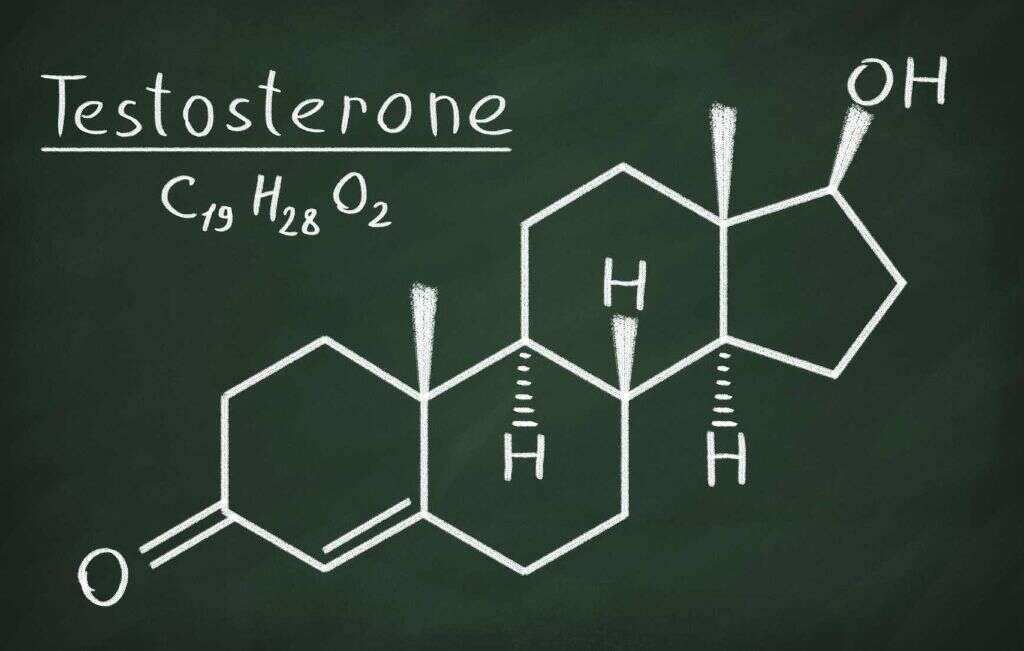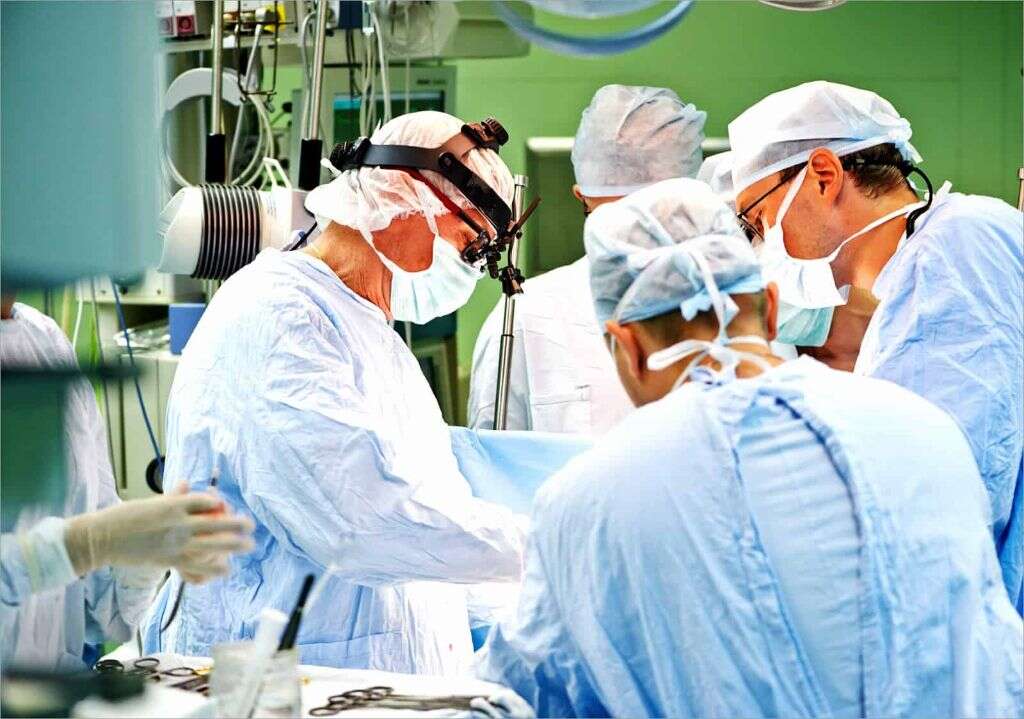What Is Testicular Atrophy?
There are nonpathological reasons that the testicles may shrink or at least appear to. For example, exposure to cold temperatures often makes the testicles appear to shrink. However, what actually happens is that the scrotum retracts to keep the testes closer to the body. This maintains an optimal temperature to facilitate sperm reduction and reverses when the temperature warms up. It is also normal for testicles to shrink when men surpass prime reproductive age due to changes in hormone production, similar to what women experience during menopause.
Testicles are made up of two different types of cells that perform two different functions: Leydig cells produce the male hormone testosterone, while germ cells produce sperm. Pathological testicular atrophy occurs due to a loss of either or both of these cell types, causing one or both of the testicles to become smaller as a result. Testicular atrophy has many possible causes and can affect men of all ages, before as well as after puberty. The resultant damage to the testicular tissue can sometimes be reversed if treatment occurs early.
1. Developmental Causes
Sometimes there is a genetic problem present that prevents the testicles from developing normally. For example, an abnormal condition of the chromosomes may cause an inherent testicular dysfunction. When the body does not produce enough testosterone during fetal development, this can cause the male genitals, including the testes, to be underdeveloped. Not only that, but it can also result in ambiguous genitalia that are neither clearly male nor female or the development of female genitalia in a person who is genetically male.
The hypothalamus and the pituitary gland are structures in the brain that signal the testicles to start producing testosterone during puberty. If there is a problem with either of these structures, the testicles may not get the signal and fail to grow as a result.
2. Hormonal Causes
An imbalance of hormones can cause testicular atrophy. Too little testosterone can cause testes to shrink, but ironically enough, too much testosterone, such as may occur with hormone replacement therapy, can cause atrophy as well. The reason is that when the body detects that there are sufficient levels of testosterone in the symptom, production of the hormone shuts down. Regulating the levels may require treatment with other types of hormones to maintain the proper balance and prevent or reverse testicular atrophy.
There are a handful of conditions occurring in men that may benefit from estrogen therapy. Examples include bone mineral deficiency and schizophrenia. Though potentially therapeutic, estrogen treatment may also cause the side effect of testicular atrophy.

3. Lifestyle Causes
The abuse of certain drugs may lead to testicular atrophy. Excessive consumption of alcohol, for example, can cause it in one of two different ways. It may cause damage directly to the tissues of the testicles, or it may cause a decrease of testosterone levels, especially if the liver becomes cirrhotic.
Anabolic steroids are another example of drugs that may cause testicles to atrophy. Abuse of them artificially increases testosterone levels and causes the body to shut down its natural production, just as may happen with testosterone replacement therapy. A man who wants to prevent or reverse testicular atrophy should discontinue the use of drugs other than prescription medications and consume alcohol only occasionally. Some medications can also cause testicular atrophy as a side effect, so a patient should discuss changing the dosage with his doctor.
4. Infectious Causes
Infectious diseases caused by viruses or bacteria can cause orchitis, which is inflammation of the testicles, sometimes causing them to atrophy over time. A man who has to have a catheter inserted into his penis for purposes of collecting and draining urine may contract a bacterial infection if the catheter is not sterile. Other examples of bacterial infections that can cause orchitis and eventual testicular atrophy include sexually transmitted diseases, such as chlamydia or gonorrhea.
HIV is an example of a viral sexually transmitted infection that can put one at risk for testicular atrophy. However, not all viruses that can cause orchitis are STIs. Mumps, for example, primarily affects the salivary glands but can also affect the reproductive organs. Orchitis occurs in approximately one-third of men who contract mumps after puberty. Though the inflammation causes the testicles to appear larger at first, testicular atrophy can develop over time. Vaccination against mumps can prevent the infection from occurring in the first place.

5. Additional Causes
A variety of other abnormalities of the reproductive system can cause testicular atrophy. Cancer of the testicles is one example, although this is a relatively rare complication. Testicular torsion occurs when the spermatic cord, which holds the testicle in place and provides its blood supply, becomes twisted. This is an emergency situation that causes acute symptoms and needs immediate medical attention.
Another fairly common cause of testicular atrophy is varicocele. This occurs when the veins in the scrotum that send deoxygenated blood back to the heart have valve deficiencies that result in backflow. Exposure to the hot blood trapped in the veins can cause damage to the sperm-producing tubes in the testicle, usually only on the left side due to the intrascrotal anatomy.
6. Symptoms
The symptoms of testicular atrophy vary somewhat depending on the underlying cause and whether it occurs before or after puberty. Men who have already gone through puberty may notice that one or both testicles are no longer of normal size. The testes may also appear softer or take on a different shape or texture. Pain is often present as well.
If the cause of the atrophy is testicular torsion, which most often affects adolescents, symptoms include sudden, severe pain as well as vomiting, dizziness, and lumps in the scrotal sac. Atrophy caused by an underlying infection may involve systemic symptoms, such as fever and nausea. Testicular atrophy that occurs before puberty may be notable for the lack of development of pubic hair, facial hair, and other secondary sex characteristics.

7. Diagnosis
Diagnosis of testicular atrophy may involve tests and a physical examination to determine the underlying cause. Doctors may test hormonal levels to see if an imbalance is to blame. They may test for sexually transmitted infections by performing a urine test or a swab.
An ultrasound may reveal reduced blood flow and any other abnormalities, and blood tests may demonstrate the presence of infection. In addition to these tests, a doctor may also perform a physical examination of the scrotum. This involves feeling the testicles and assessing the firmness, size, shape, and texture of each. The doctor usually orders tests on the basis of the findings on the physical exam.
8. Treatment
The cause of the testicular atrophy determines the appropriate treatment option. Surgical repair is often necessary if the cause is testicular torsion or varicocele. Antibiotics are usually prescribed to treat a bacterial infection, while testicular atrophy due to alcohol or drug use requires lifestyle modifications. If the issue is hormonal, pharmacotherapy to correct the imbalance may be indicated.
There have been some claims that natural remedies, such as drinking an herbal tea specifically marketed for that purpose, can treat testicular atrophy and/or the underlying conditions that cause it. These claims should be regarded with skepticism. As of now, there is no clinical evidence that they are effective or beneficial.

9. Complications
Men with testicular atrophy may find their secondary sex characteristics diminished. For example, they may lose muscle mass and experience decreased facial hair and/or pubic hair. Additionally, they may experience a decreased sex drive and find themselves infertile. Failure of the germ cells can result in a condition called non-obstructive azoospermia. This is an absence of sperm in the ejaculate.
Testicular torsion not only causes atrophy, but the affected testicle(s) can also become gangrenous and die if treatment does not take place within a matter of hours after the onset of symptoms. If treatment is not obtained in time and necrosis, or tissue death, does set in, it then becomes necessary to remove the affected testicle.
10. Prognosis
Often, treatment of the underlying condition causes the testicle to return to normal size and function over time. Sometimes, however, the damage to the tissue is so great that the atrophy remains permanent. The likelihood that testicular atrophy will be reversible improves with early treatment. For that reason, it is important for men to perform self-examinations on a regular basis and familiarize themselves with the normal condition of their testicles and report any abnormalities to a doctor right away.
Some men feel embarrassed talking about problems involving sexual organs with a doctor. They may try to conceal their symptoms from others to avoid being perceived as weak or unmanly due to the pressure that societal gender expectations place on them. While these feelings are understandable, ignoring the problem is unlikely to make it better. In fact, the opposite is more likely to occur. While any pain or troubling symptoms of the testes should be evaluated right away, it is especially important to receive immediate medical attention for any pain and symptoms in the genitals that are severe and/or come on suddenly.











